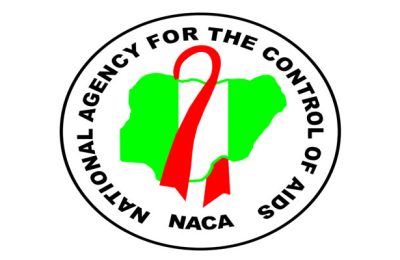
Bolade Olawoye is an exceptionally talented photographer, cinematographer and film director based in East London. With a unique blend of artistic vision and technical prowess, Bolade is rapidly emerging as a leading creative force in the industry. Known for his ability to capture the essence of a moment and translate it into a compelling visual narrative, Bolade has an extensive photography portfolio with photo exhibitions displaying his work and documentaries to his name. He speaks to ROTIMI IGE about his craft.
Can you tell us about your journey as a photographer? What inspired you to pursue this career?

I first got a camera in my late teenage years. It was a second-hand Canon Rebel T7. Prior to this, I never really had an interest in cameras and honestly, I never liked the camera. I always thought I could not do a lot with it, but looking back in hindsight, the camera was never bad. I blame the kit lens. After receiving the camera, my parents took me to the neighbourhood photographer we patronised whenever we wanted to take passport photos to learn photography from. I further disliked this, particularly because my learning experience depended on the photographer having customers, which was not very frequent. I eventually left his tutelage to go to university, where I spent my weekends shooting street photography and church services. These experiences built the skill sets on which I thrive today.
What types of photography do you specialise in, and what drew you to these particular genres?
I see photography as a tool to tell a story, and I do not particularly enjoy telling just one story, so I venture into different genres of photography ever so often. Over the years, I have ventured into street art, events, portraits, wedding, landscape, and product photography, each with its different nuances and perks. If I were to favour one, I would pick wedding photography for the sole reason that it easily tells the most expressive stories, making it easier to connect with the audience. However, street photography may beg to differ at times.
Can you describe your creative process when planning and executing a photoshoot?
Honestly, it depends on the kind of photo shoot. No two shoots are the same. My creative process for two weddings may differ depending on various factors. However, one thing remains: adequate communication with the parties involved. In most cases, the aim of the shoot determines the creative process. For a street shoot, I would probably research the area beforehand, whereas for individual shoots, I also seek to know their style and the look they are aiming for. While everyone might not know what they want, most people know what they do not want, so providing options also helps to reach a consensus. Once the style is agreed upon, I have a team comprising a stylist and a creative director who help to ensure that the vision is realised. Often, as a photographer, you tend to wear these hats yourself.
What are some of the most challenging projects you’ve worked on, and how did you overcome those challenges?
The most challenging projects I’ve ever worked on always stem from poor communication during the planning phase. You can almost tell when a project is going to be challenging, so one way I overcome these challenges is to anticipate and prepare for them. For example, once there is poor communication in the planning phase, I may highlight it or try to be explicit with information with a written trail, or both. Managing people is also a challenge I never expected but faced. In a typical shoot, you have to ensure the client is always happy, the crew on set are in a good mood, and that the required result is being achieved.
How do you stay inspired and continue to find fresh perspectives in your work?
How can you not? The industry is continuously evolving, with artificial intelligence making the already saturated market more competitive. Besides competitiveness, I sincerely appreciate seeing good photography pieces, so I follow the works of other creatives that I admire. Trying to understand their thought process is always inspiring, and that brings a fresh perspective to my work.
Can you share some of your favourite photographs and the stories behind them?
I have a piece of London’s St. Paul’s Cathedral which I really like. The story behind that piece is simple. I had seen a creative take a picture of the cathedral and I wanted to retell it from a different perspective. I also have a portrait of Dunsin Oyekan which I took during a concert that I really look back on because of the expressive outward storytelling and the personal stories behind the portrait. I had been trying all night to get a very candid portrait, which I eventually did, but in the process, I figured I had created a gallery’s worth of pictures that he appreciated.
How do you approach connecting with your subjects to capture genuine and impactful images?
It is all in the communication. I get to know my subjects while planning the shoot. I try to understand what the shoot is for, why a specific outfit, and what they are really aiming for. This helps me gauge what exactly they want and how to go about achieving it.
How do you keep up with the trends and technologies in photography?
Social media does the trick. Instagram and Pinterest are the holy grail for keeping up with trends and technology. There are so many blogs to stay on track with the latest styles and content creators who provide tech reviews. For me, this really helps because before I go for each shoot, I prepare a mood board, and similarly, before purchasing any gear, I watch a review.
What advice would you give to aspiring photographers looking to make a name for themselves in the industry?
Start easy. Appreciate and learn the art. Network. It is never really as hard as you think. People do better because they have more information than you. Try to understand everything about what you currently possess. Appreciate pictures you like and recreate them. Finally, network vertically with people ahead and horizontally with peers to grow faster.
Do not be scared to serve as well. I got a lot of mentors early on because I was happy to be an assistant. This way, I learnt a lot besides skill from a close range, such as work ethics and client management.
How do you handle the business side of photography, such as marketing, client relations, and financial management?
These things are very important, although very uninteresting, or at least traditionally. Nowadays, content creation is a useful tool for marketing. Additionally, because of the rapport I build with clients while shooting, we more often than not become friends. For example, it is not out of the norm to shoot a couple’s pre-wedding pictures, wedding pictures, and maternity pictures eventually. At this point, you might as well change your family name to theirs. I also do a monthly account and budget to ensure I have a financial plan for each month and do not squander most of my money on gear.
What do you believe sets your work apart from other photographers in the industry?
The storytelling behind it is always a distinctive factor for me. Everyone has a story and it is my duty to find that story and tell it. As highlighted earlier, a good client relationship also makes it a lot easier to get genuine pictures.
How do you see your photography evolving in the next few years, and what are your goals for the future?
I have just concluded two exhibitions; I hope to have many more in the next few years. I would also love to have a multi-purpose visual venue that creatives could use for their projects. Going on tour with an artist is also on my bucket list and I hope to achieve that very soon.
Can you talk about a particularly memorable or impactful project you’ve worked on and its significance to you?
The first time I shot Limoblaze during an event was very memorable. From being a fan to shooting for him professionally, it was a moment to take in. Working on his musical releases afterwards was always a pleasure, pushing me to always do better than the last. I really appreciated the opportunity.
What do you hope viewers take away from your photographs when they see them in newspapers or magazines?
I hope viewers can see that there is always a bigger picture. There is always a story behind each picture and the different interpretations viewers have to each photo highlight our own stories.
Read Also: Gov Otti launches disbursement of N1bn interest-free revolving loan








